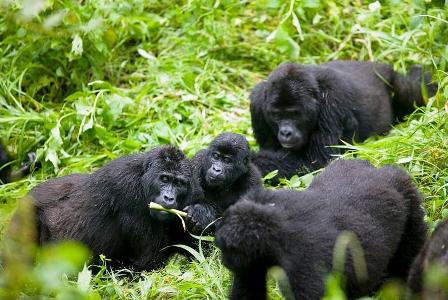Figures show that tourism has played a significant part in increasing the  number of gorillas in Africa.
number of gorillas in Africa.
Recent statistics show that the population of Uganda’s mountain gorillas has grown to 400, from 302 in 2006. This means that the number of mountain gorillas in Africa has increased to 880, which is good news for conservationists who have been trying to save the species from extinction.
Uganda is home to nearly half of the world’s mountain gorillas that remain in the wild. This distinction has helped the nation’s tourism industry, and it has become a source of stability for the nation that depends on tourism revenues for its overall development. After Uganda, the rest of the surviving mountain gorillas are located in Congo and Rwanda.
Uganda’s tourism department said, ‘The increase in the population of mountain gorillas in Bwindi Impenetrable National Park is testimony to the sound natural resource management policies that are being implemented in the protected areas. This result confirms beyond reasonable doubt that Uganda’s conservation efforts are paying off.’
Most of the conservation efforts in the nation are focused on the Bwindi Impenetrable National Park, a network of jungle forests deep in the country’s southwestern frontier. The national forest is recognised by UNESCO as a heritage site of world value.
A permit to track gorillas at the national park costs at least USD500, and the World Wildlife Fund estimates that each gorilla brings in up to USD1m in revenue each year for the East African country. Even though some of the local population had earlier hunted gorillas, Ugandan wildlife officials have been able to build successful partnerships with local communities by helping local projects and converting previously hostile groups into friendly advocates for the gorillas’ survival.
Source: Travel News





